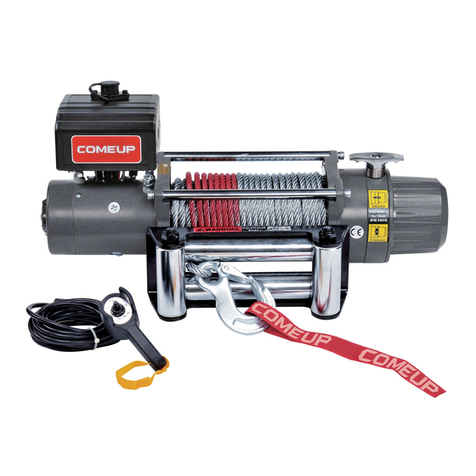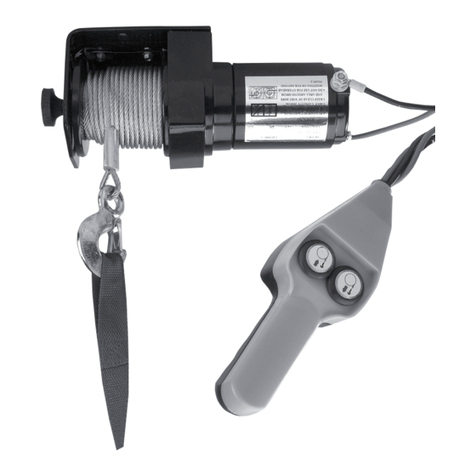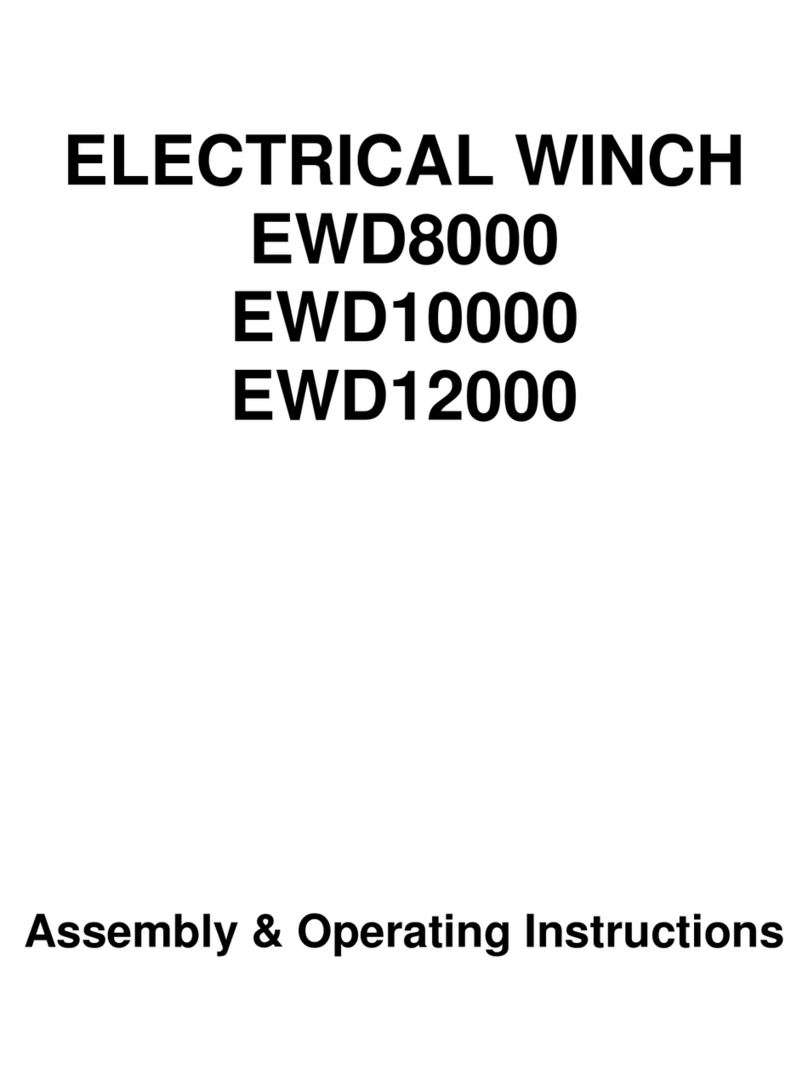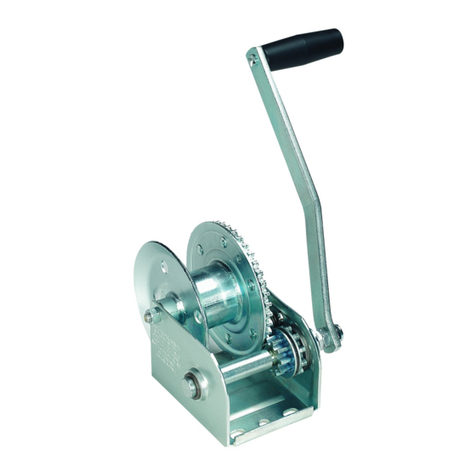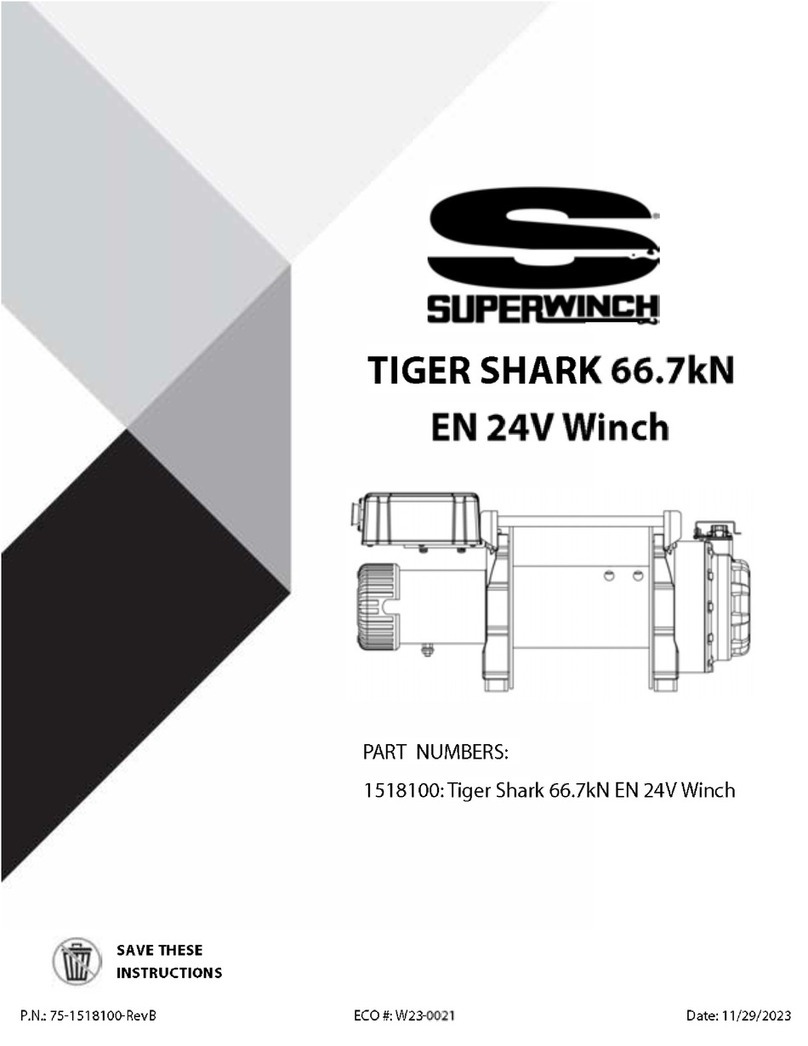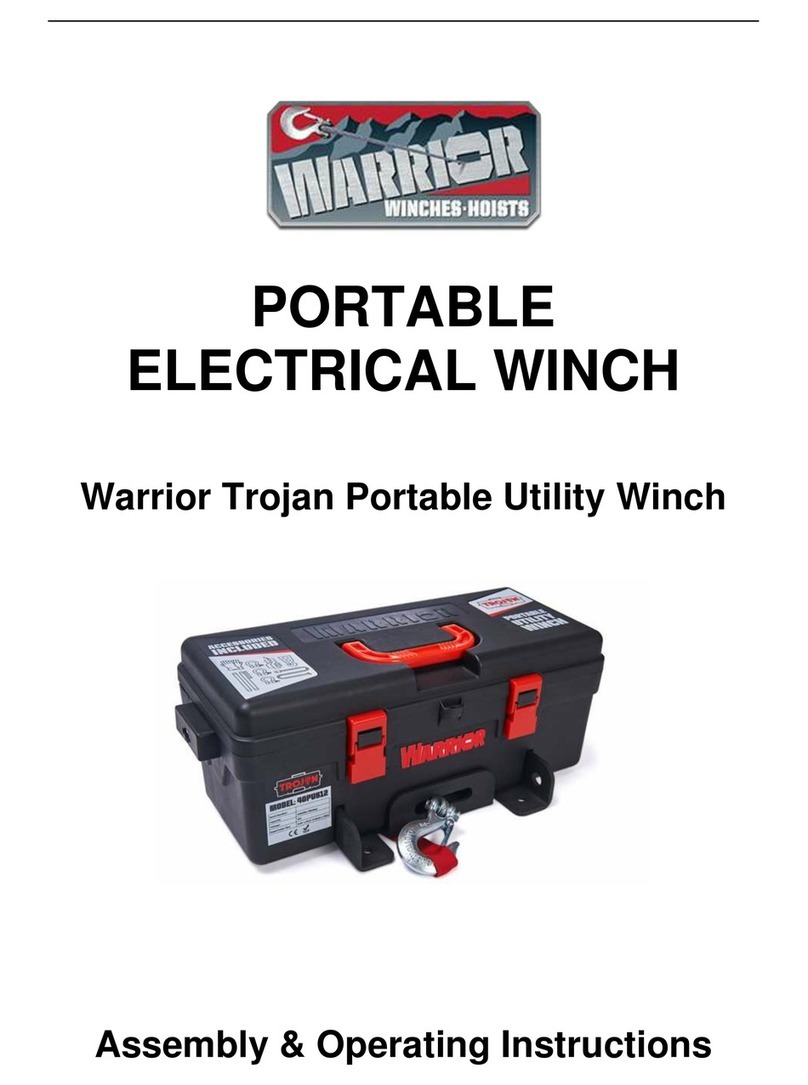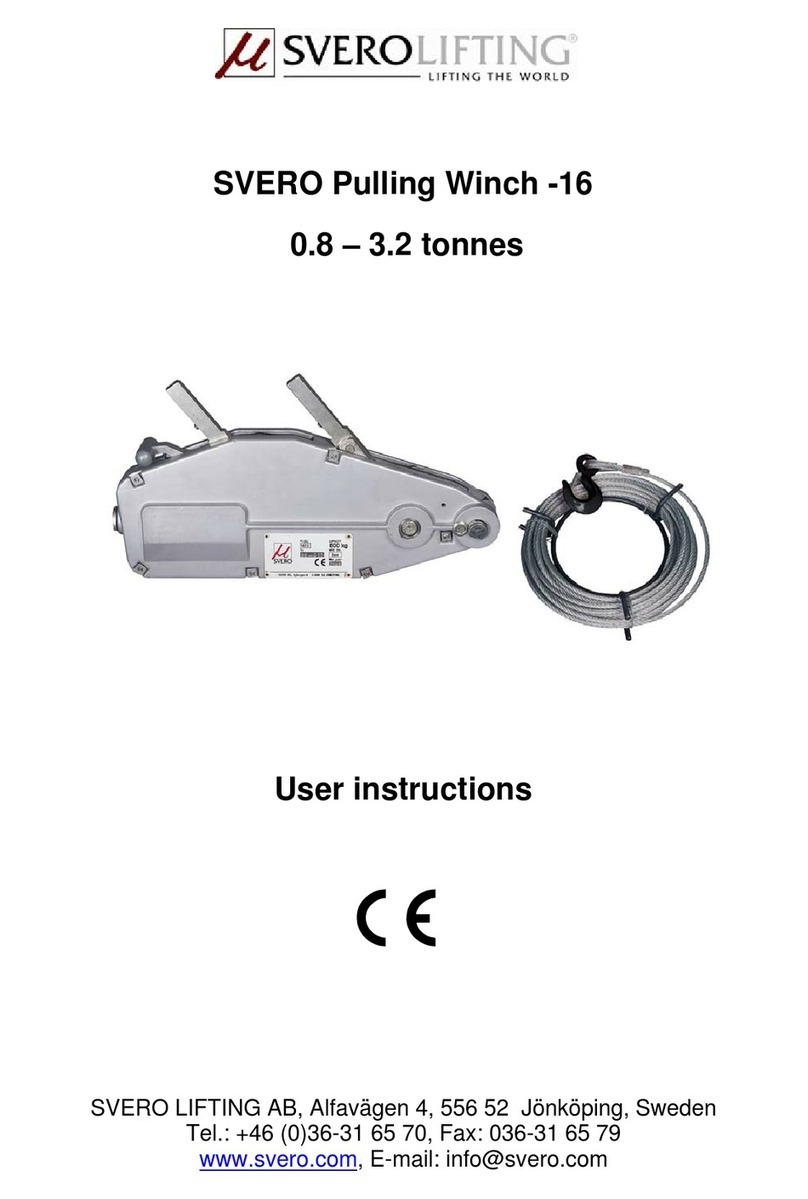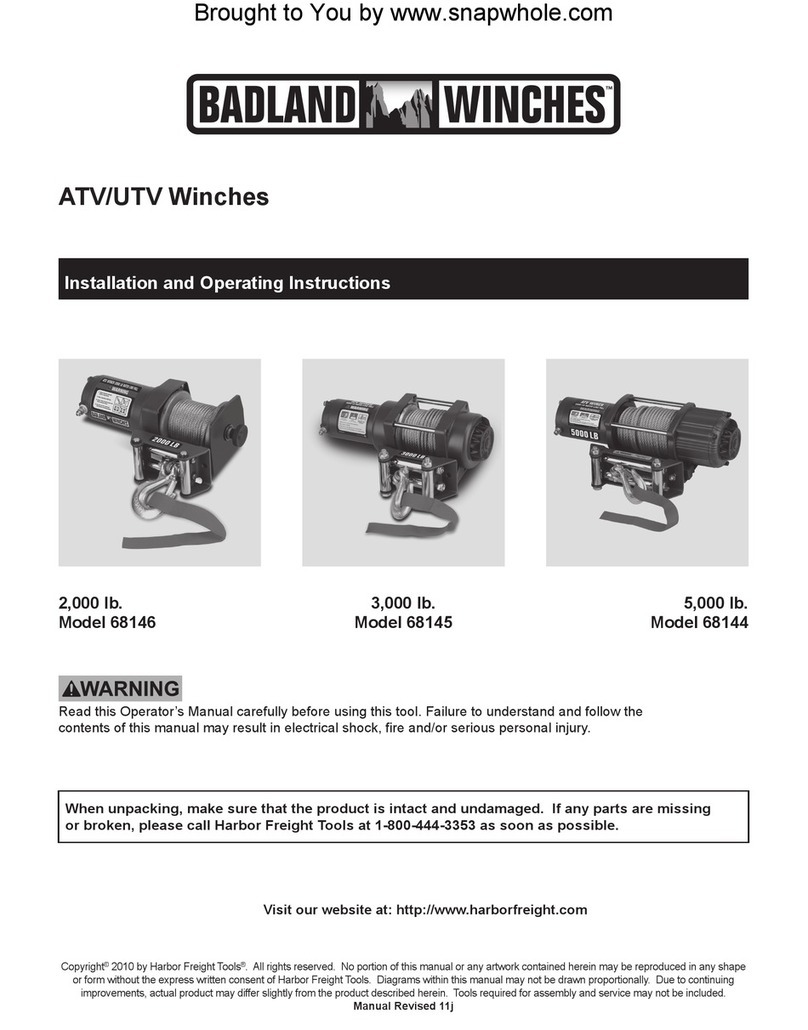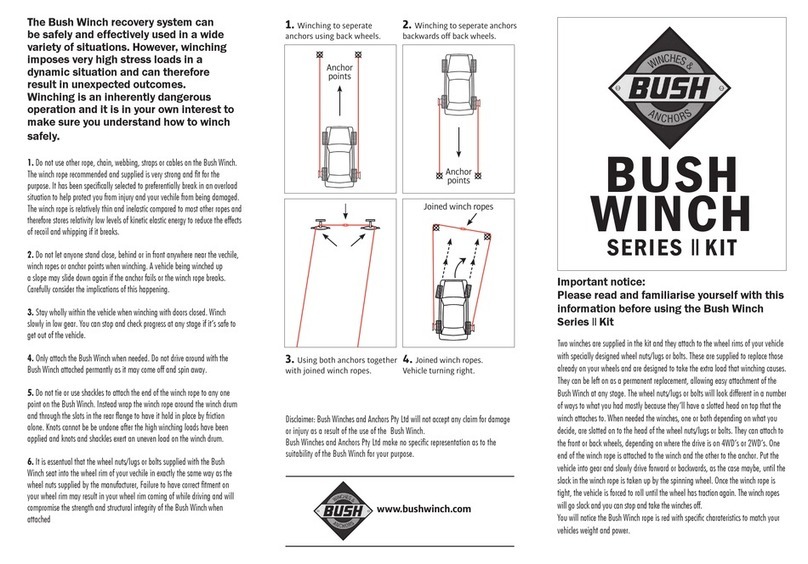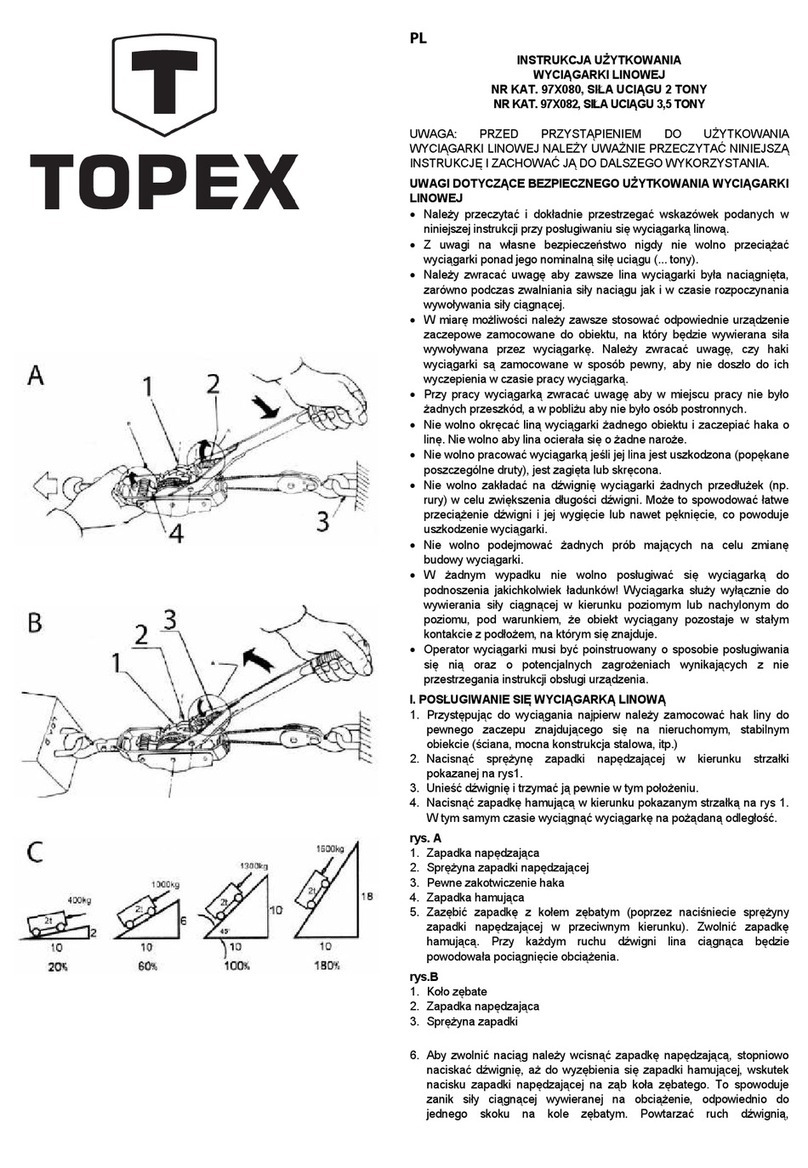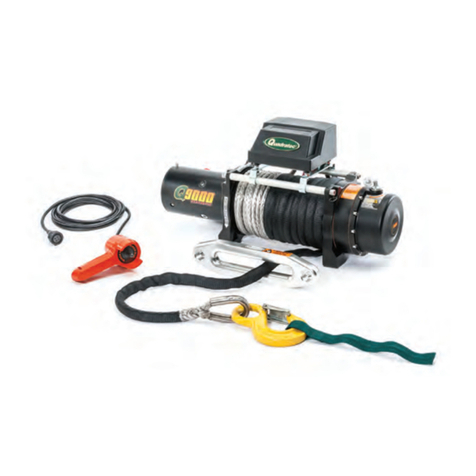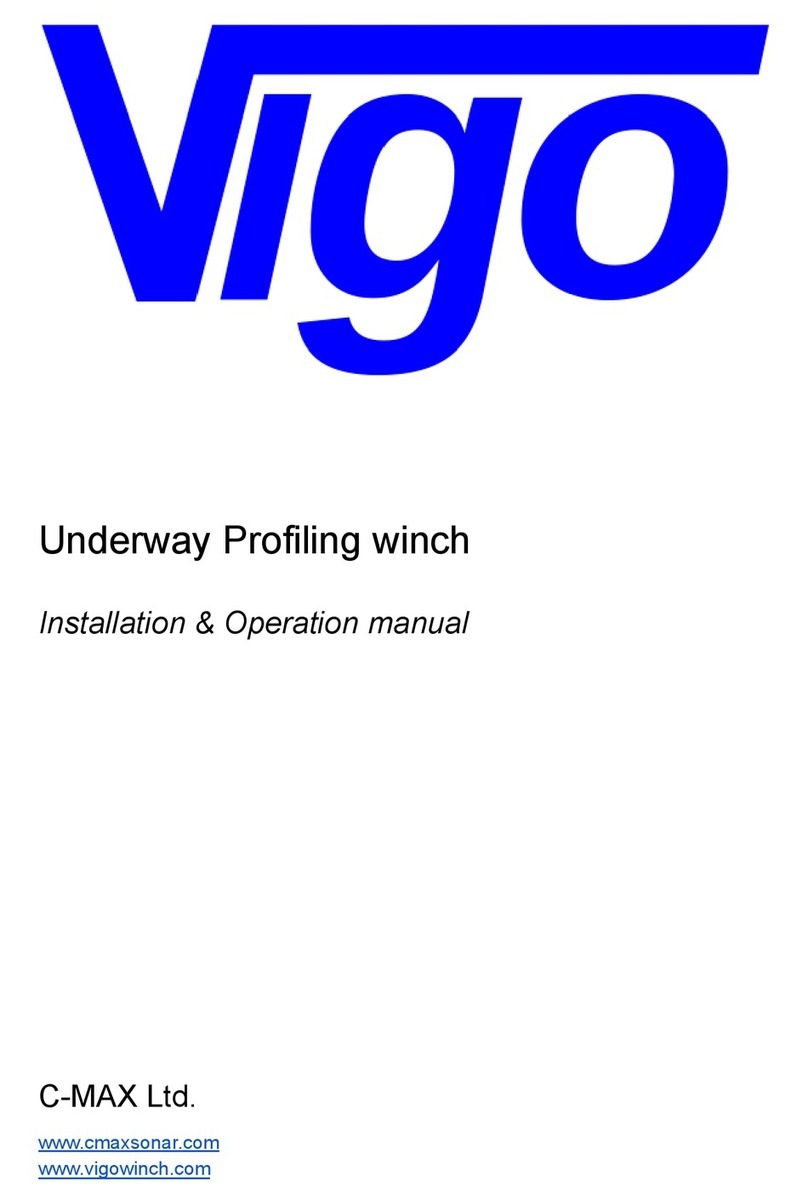
9
5. Never lengthen, or make any substitution for the
LUG-ALL reversible handle.
The LUG-ALL reversible handle is designed to bend as a warning
when the hoist is loaded at more than 100% capacity. If the handle
shouldbreakthroughhoist overload or improper use, the LUG-ALL
mustnotbeuseduntila LUG-ALL replacementhandleisobtained.
Makeshift handles, or handle extensions are dangerous. They can
increasetheleverageso thatthehoistmayeasily exceeditscapacity
withouttheuser’sknowledgeandresult in physical harm.
6. Keep the hoist cable or web strap free at all times
and never let it come in contact with any other
surface.
Alwaysrigyour LUG-ALLso that ithangsfreelyandcanmovefrom
side to side. The cable or web strap should hang in a straight line
betweenthe top hook and the load hook.Neverjamtheframeout of
the line as this subjects it to extra stress for uneven loading. Cable
or web strap must be in a straight line to assure even wrapping on
thedrum.
Donot snagorpullthe cable orwebstrapover sharporroughedges
asthiswillbreakthe wires.Neverbendthecableorwebstrap around
any object or surface.
7. Observe safe rigging practices.
Become familiar with proper rigging practices before you operate
yourLUG-ALL.Consult the illustrations on pages 6 and 7 to protect
against improper use of your LUG-ALL. All LUG-ALL ratings are
basedon freelysuspendedloads.LUG-ALLs cannotbesafely used
forsideloading.
Whenrigging, always make sure thatthe loadis securelyseatedin
the throat of the hook before hoisting.
8. Stand clear of all loads. Never leave an unattended
load suspended in air.
Most safety instructions are merely common sense. Stay alert and
stay safe.
9. Never use your LUG-ALL as a tow line.
Your LUG-ALL must never be used for external loading. The
LUG-ALL isdesignedonlyforapplicationswherethesafetyhandle
is the controlling force in load movement. The safety handle must
alwaysbemanually engaged for safe operation of yourLUG-ALL.
